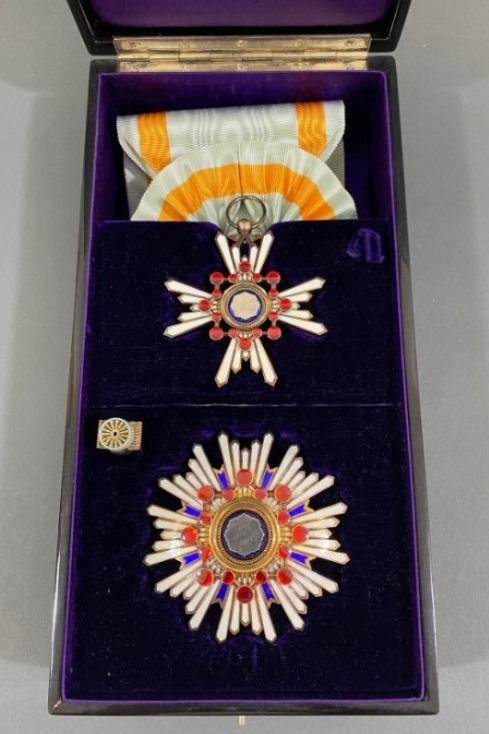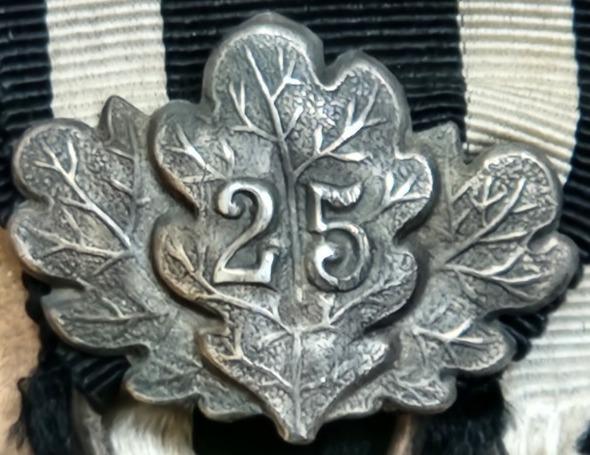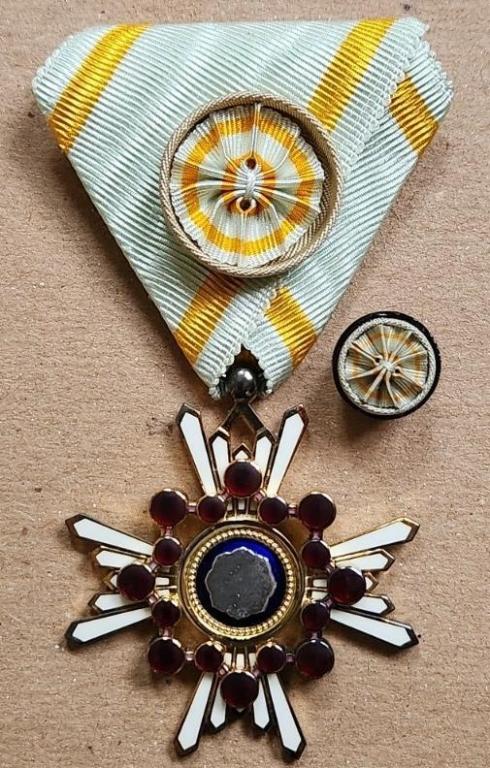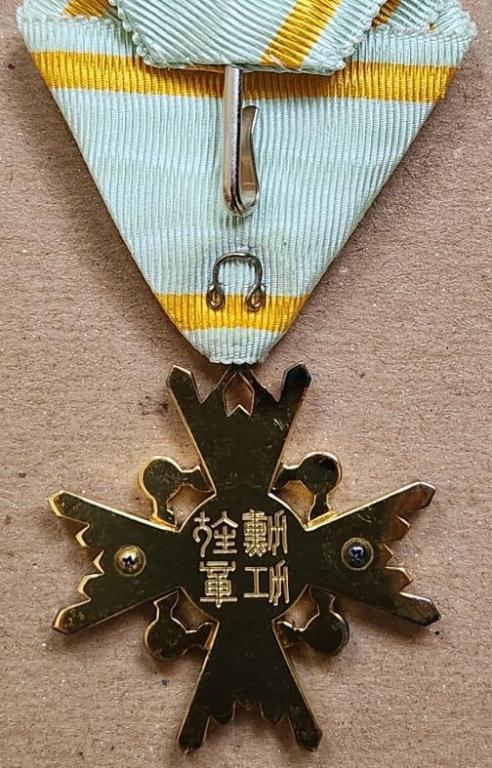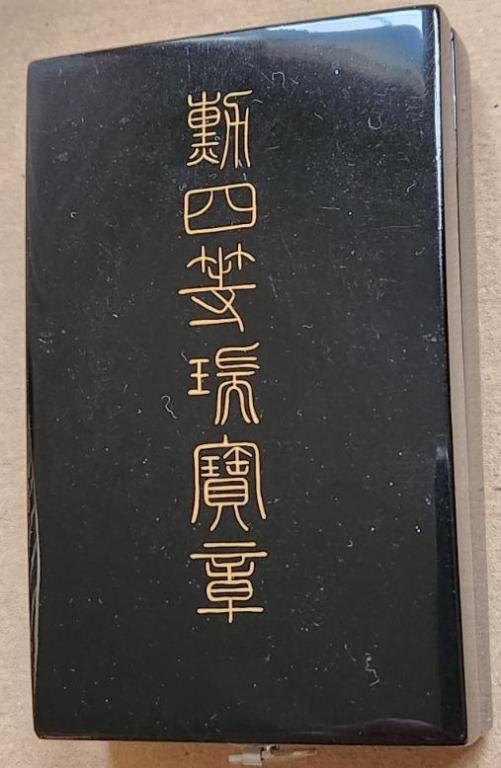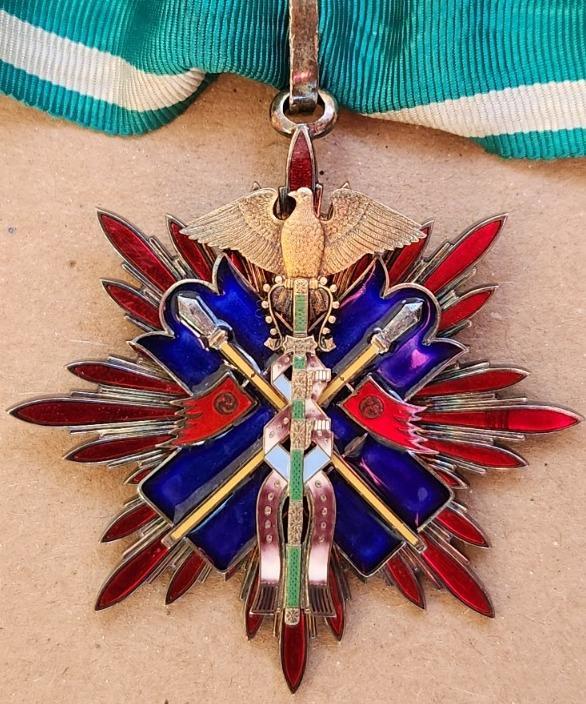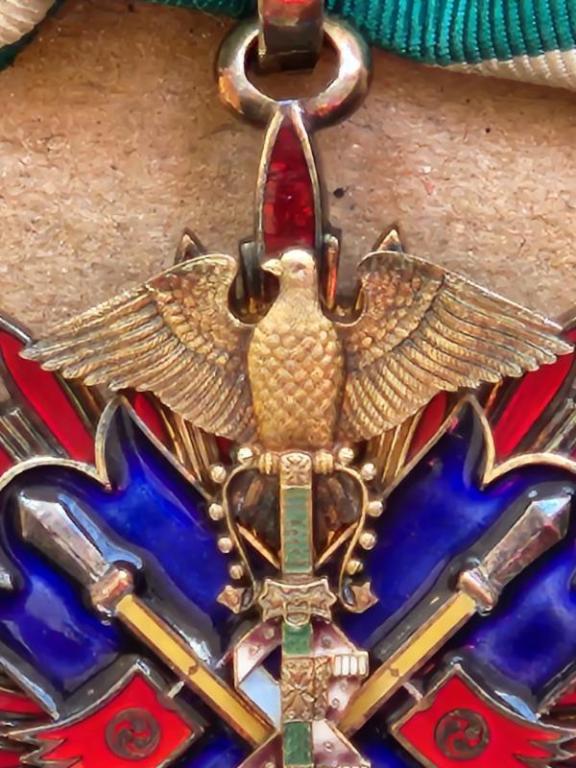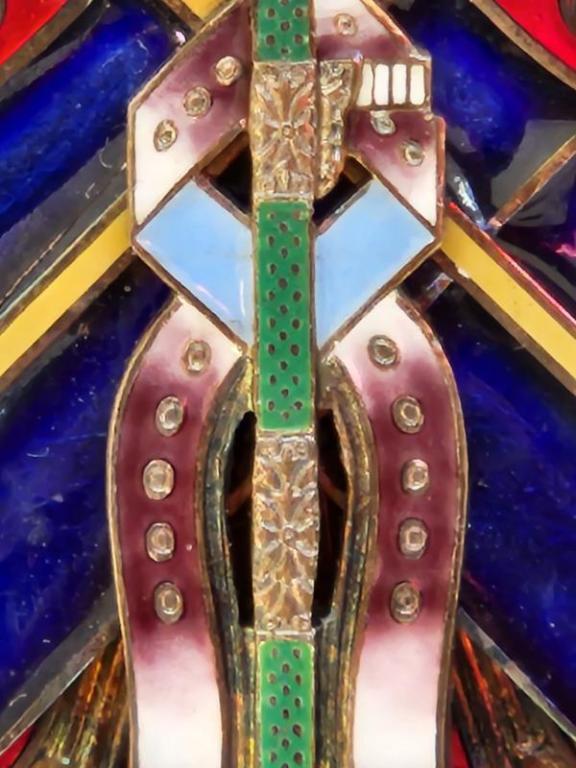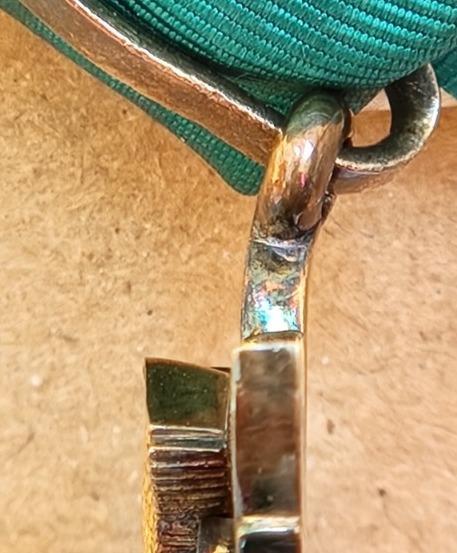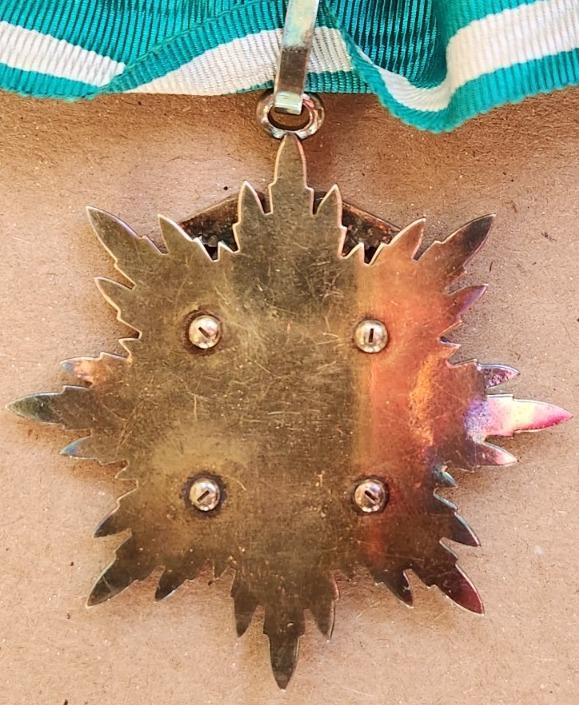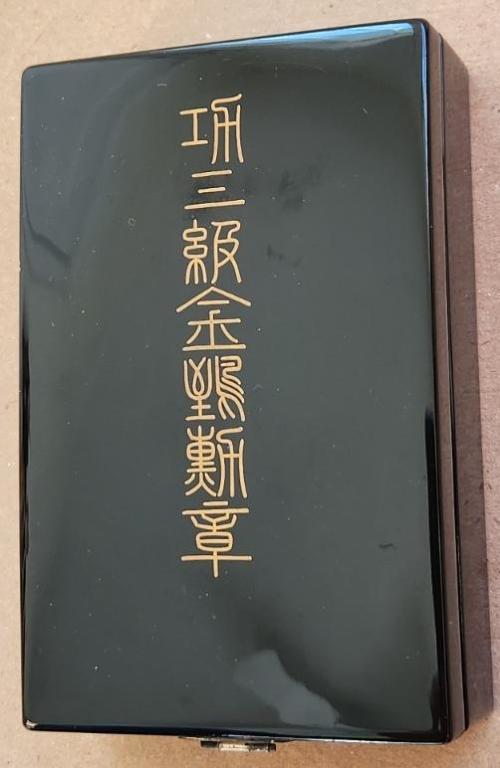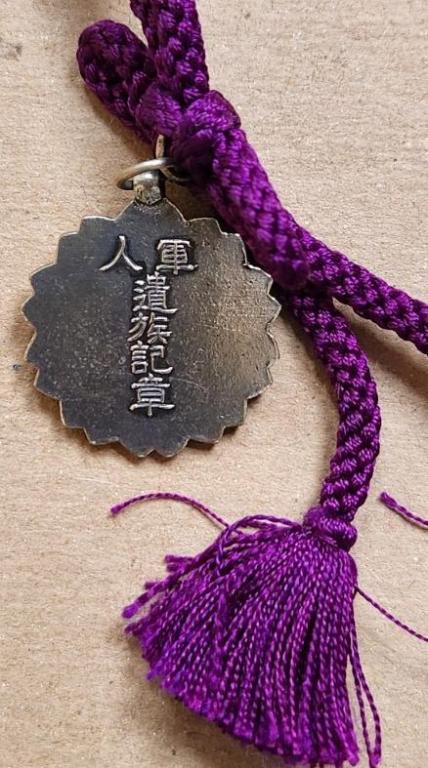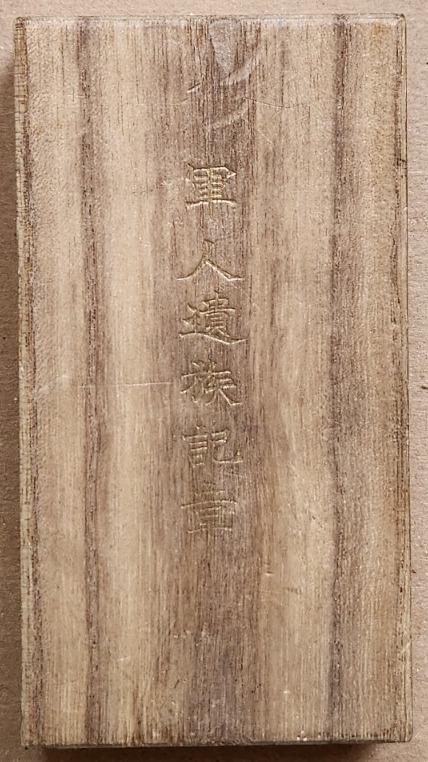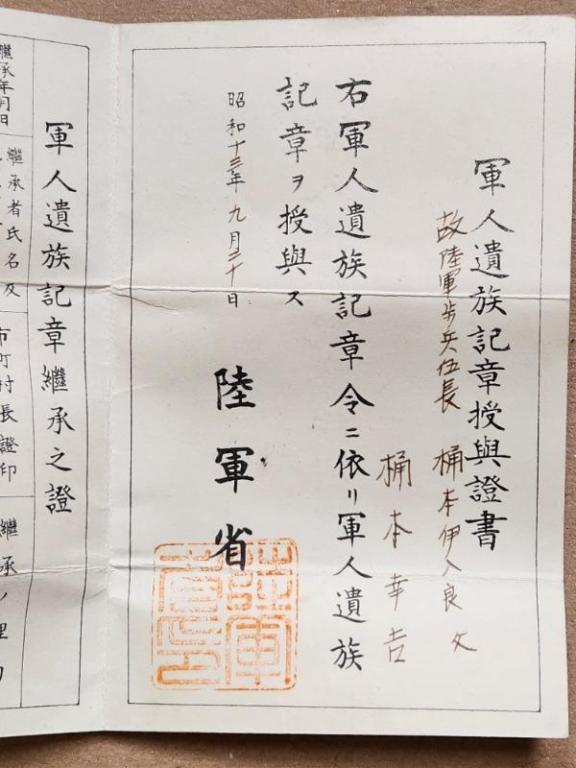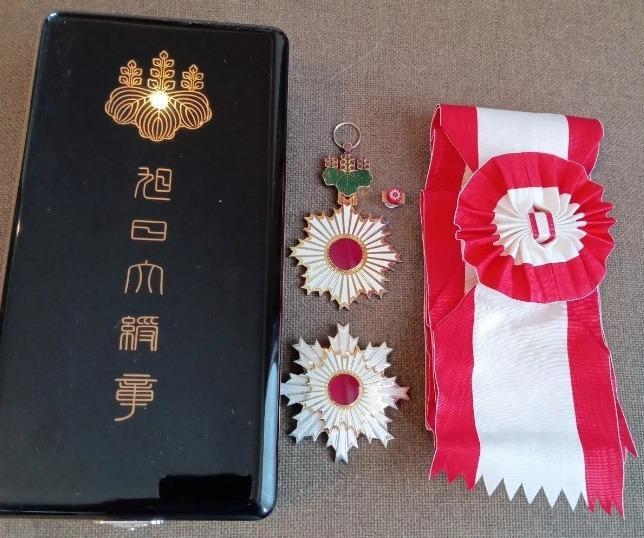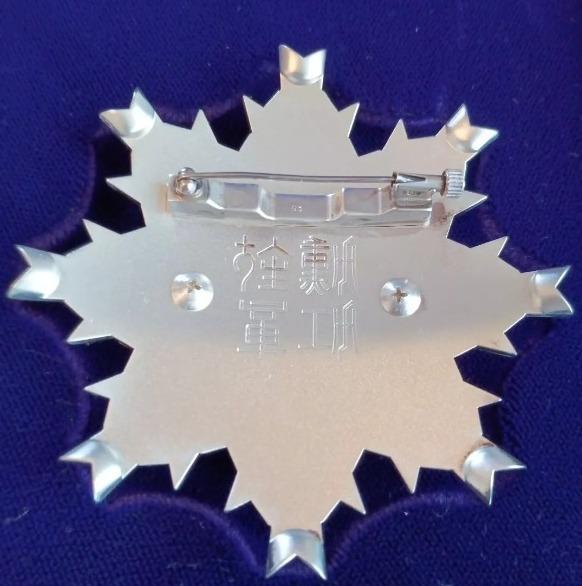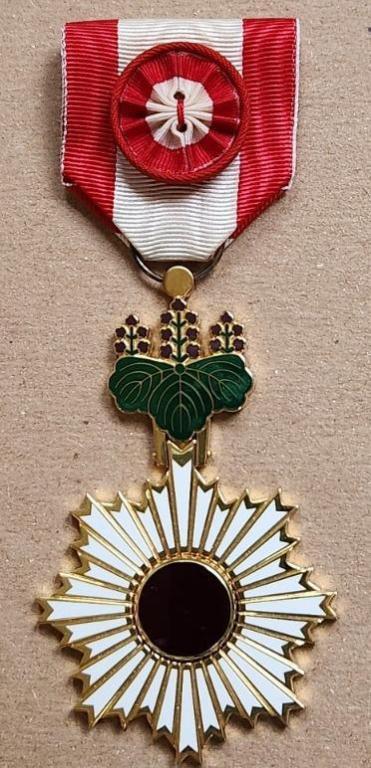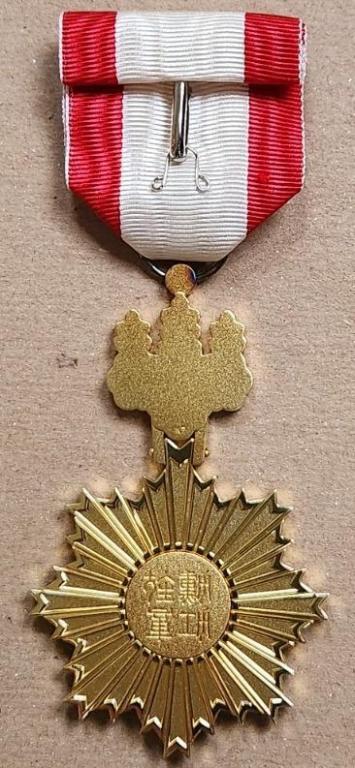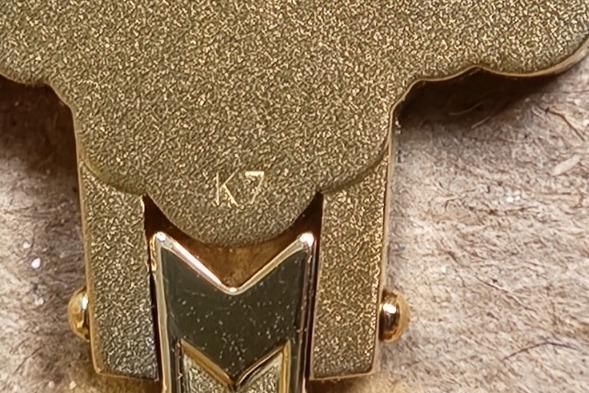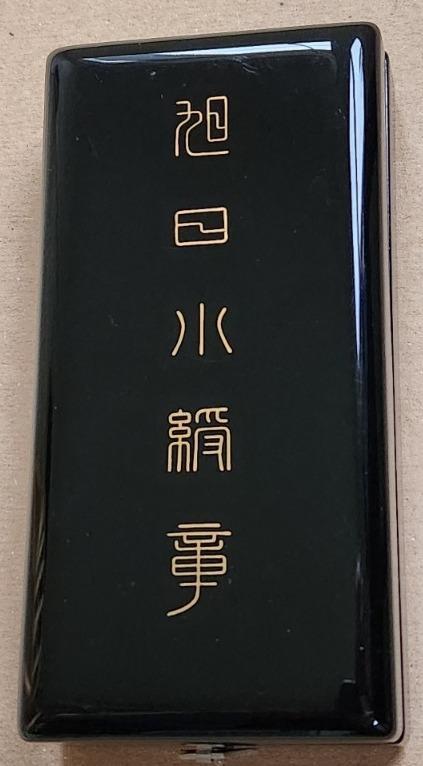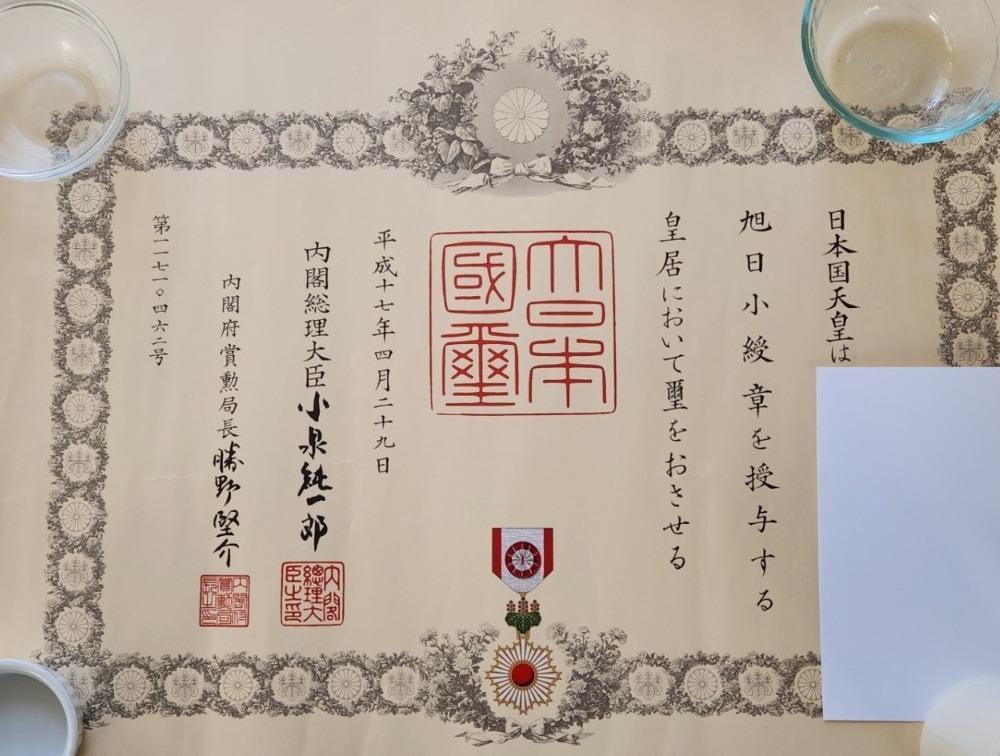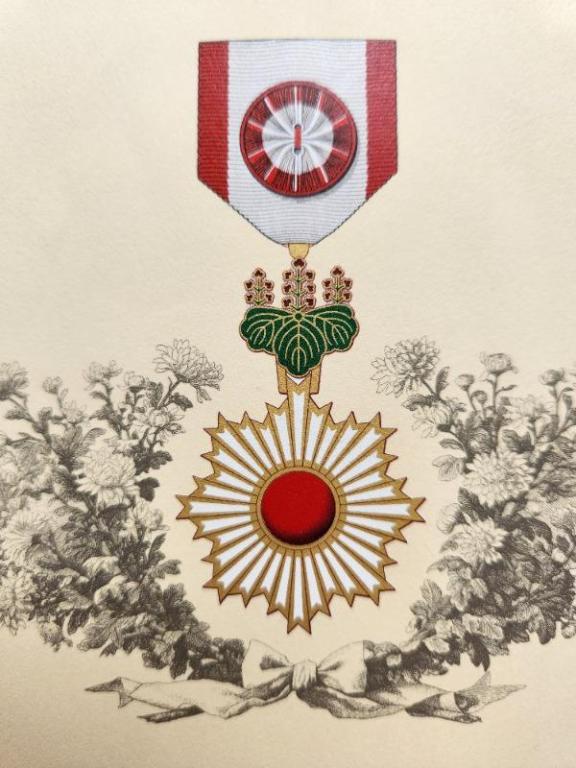-
Posts
468 -
Joined
-
Last visited
-
Days Won
20
Content Type
Profiles
Forums
Blogs
Gallery
Events
Store
Everything posted by TracA
-
Greetings, I am reviving this approximately 11 ½ year old thread because I just purchased an 1870 EK II with 25th Jubilee Oak Leaves and I cannot pin down the variant. In addition, Komtur is still active on this forum and I was hoping that he had some updates. The 25th Oak Leaves below is approximately 19 mm high by 25 mm wide. Looking through this thread the 2 comes close to Variant 3, however my 2 is slimmer, but the stems do not quite match. I also considered Variant 14, again based upon the 2. Any opinions/insight into the variant will be most welcome. Thank you. Tracy
-
(1).thumb.jpg.38cff8cd9c5d55311a4208b0a83448ba.jpg)
My First Crimea Medal
TracA replied to TracA's topic in Great Britain: Orders, Gallantry, Campaign Medals
Hello Azyeoman, Agreed, 100%. I am quickly coming to a point where I have to decide if I want to pay for Ancestry or Find My Past, I am also taking your warning to heart, but I fear that it might be too late. All the best, Tracy -
(1).thumb.jpg.38cff8cd9c5d55311a4208b0a83448ba.jpg)
My First Crimea Medal
TracA replied to TracA's topic in Great Britain: Orders, Gallantry, Campaign Medals
Greetings, I have decided to post in this thread again because I learned something in the past week, and thought that I would mark it here as a reminder to myself. I am sure that all of you experienced members might chuckle at my revelation: If you look your man up on the medal roll, go all of the way and look at every page of the roll. The seller provided a paper copy of WO 100/26, p. 161 and there I stopped. Last week while looking through WO 100/26 for someone else’s name, I found Pte Patrick O’brien two other times. He is listed a second time on p. 182 and a third time on p. 196. On p. 182 is his full regiment number, 2534, whereas all that I could see on p. 161 was an incomplete number. In addition, pages 179 to 182 are clearly a section of the roll listing the 4th Regiment’s dead (a complete listing? I know not), and next to Pte Patrick O’brien’s name is the day and month of his death. The date is there as well, but it is obscured by the incomplete digitization of the roll’s gutter. On p. 161 my only clue to the fact that Pte Patrick O’brien had died was the “W.O.” next to his name. On p. 182 was the conclusive evidence that he had in fact died. The other fact that I learned from p. 182 was his definitive entitlement to the Sebastopol clasp, as that entitlement is covered from p. 164 to 182. Page 196 is a reiteration of Pte Patrick O’brien’s entitlement to the Alma and Inkerman clasps, in a section of the medal roll that appears to be a running count of the total number of Alma and Inkerman clasps awarded to members of the 4th Regiment (pages 190 to 199). Once again, here “W.O.” is annotated next to his name with the date which looks to me to be 7/4/57. Note to self: although it might be time consuming and tedious, look at every page of the medal roll. All the best, Tracy -
Hello No One, Thank you for following up with this. Yes, a bit disappointing, but at least it is some sort of answer. I will add this to my overall documentation. Hope that you are doing well. All the best, Tracy
-
No One, Nice one! I hope that you have been well. Tracy
-
It has been just under three months since I posted in this thread. I recently filled a hole in my collection by purchasing an Order of the Sacred Treasure 4th Class with the two screw reverse. I figured that there would be a hallmark on the reverse of the ball and yes, yes there was. The mark is NK and although Medals of Asia does not have this specific two-letter mark, it does have an NE and an NL, September 30, 1992 and April 29, 1993, respectively. A well known user on War Relics Forum believes that on JapanX’s list the first letter is likely the year of manufacture and the second letter/digit is likely some sort of lot number designation. At first I assumed that was a reasonable interpretation, and it might very well be true, but on JapanX’s list there are a lot of first position alpha characters that cross years: for example, A is from 1979 to 1981; B is from 1980 to 1981, but there is also an entry for 2007; C is from 1981 to 1982, but there is an entry for 1985, 1986, 1989, and 2008. What I can say about the date of this piece is to repeat what JapanX has posted here on GMIC: two screw reverses date from 1982/83 to 2003. See https://gmic.co.uk/topic/58229-sacred-treasures-with-flat-reversetwo-screws-reverse-when-this-change-occurred/?_fromLogin=1. It is a beautiful piece and I paid extra for it because there is almost no tarnish to the gilt, especially on the reverse. Unfortunately my cell phone darkened all of the images because I took the photos head-on and the piece is so shiny that it reflects my black cell phone. The ribbon is a beautiful very pale blue. Enjoy. Tracy Obverse with rosette. There are no markings on the rosette: Reverse, much, much darker than it is. In hand it is very shiny gilt. NK close-up: Case lid. Picture taken at an angle to minimize reflection:
-
Graf, You have an amazingly beautiful collection of French medals. All the best, Tracy
-
DRB 1643, Beautiful Kite. All the best, Tracy
-
Tom and No One, Thank you for the compliments. I was very happy to add this wonderful Kite to my collection. I am thinking that this is as high in grade that I will go. All the best, Tracy
-
Greetings, The opportunity arose, I was able to make the price work, and so I brought a wonderful Order of the Golden Kite 3rd Class into my collection. I never really thought that I would obtain one, but lucky I am. For a history of the Golden Kite, see the excellent “Story of the Golden Kite” by Nick Komiya on the WRF at https://www.warrelics.eu/forum/japanese-militaria/story-golden-kite-671453/. For outstanding classification and statistical work, of course see JapanX’s four Golden Kite threads pinned here at GMIC on the Japan forum. For my purposes I relied on the thread related to the 3rd and 2nd class Kites. After quickly reading over JapanX’s thread I simply assumed that this was a Showa Kite, and that my only work would be to determine if it was a Showa 3.1 or 3.2. I did not think that I might possess a rarer Kite variation than the “often encountered” Showa variation. However, I read JapanX’s thread closer, several times, and came to the conclusion that my Kite is a Meiji Late - Taisho Early 2.2. The shape of the Kite on my 3rd Class matches that of the Meiji Late - Taisho Early 2.2, and the color of the enamel on the sword scabbard and lower part of the harnesses matches that of the Meiji Late - Taisho Early 2.2 as opposed to the 2.1. On my Kite the 12h ray is part of the ring through which the cravat loop is threaded, which holds true for all of the Kites discussed in the above referenced thread, with the exception of the Showa 3.1. The clincher, however, is the fact that on my Kite the 12h beam at the top is recurved, a characteristic per JapanX that only Meiji Late - Taisho Early 2.2s have. I note one difference related to my 3rd Class versus all of the examples that JapanX displays in his thread: each of his examples have two flag fasteners on the left side flag but mine only has one. I really do not know if this would be enough to qualify for a sub-variation, but I mention it nonetheless. It is a beautiful 3rd Class Kite and is a centerpiece of my collection. Enjoy, Tracy Obverse: Close-up of the Kite. Notice how the 12h ray is part of the ring through which the cravat loop is threaded. Also notice the flag fasteners. Both sides have only a single fastener. Scabbard and harness close up: Notice that the 12h beam at the top is recurved: Reverse: The case lid, with seven gold kanji and the Showa stylization of 勲 (kun). I would expect the case lid to have only six kanji, so I assume that the Kite and the case could be a put together.
-
Ahhh, yes. Now I understand. It failed to register with me that 30 g would imply a table medal rather than a medal attached to a ribbon for wear. Very interesting piece. All the best, Tracy
-
Hello, Are you asking if the medal is authentic or if it can be traced to a recipient or both? Without an inscription I do not see how it can be traced. Per British Battles and Medals, 7th edition, the diameter is correct. Unfortunately no weight is given. The steel clip and ring are missing. If the medal is in your possession, then can you tell if a clip was ever attached to the medal? Tracy
-
No One, I should not have missed the kanji for "father". 😞 Thank you, as always, for your assistance. Another reason why I always verify the seller's translation, if provided: they can be wrong. The seller stated that the badge went to the Corporal's son. Clearly not. All the best, Tracy
-
I have recently obtained another Military Bereaved Family Badge. I purchased this one because neatly folded inside the wooden box was the award document. This badge is much more substantial and heavier than the other two that I own. I verified the seller’s translation of the pertinent sections of the first page of the award document: Showa 13 (1938) September 20. “Deceased Army Infantry Corporal Okemoto ??, Okemoto Kokuchi.” The seller states that the Corporal’s given name is Iyoshi, but I have to admit that I just cannot see it. Am I missing something? I also do not see an indication of Okemoto Kokuchi’s relation to Corporal Okemoto, but I assume that it is his son. All the best, Tracy Obverse: Reverse: Box lid: Award document page 1:
-
Hello Wat05, I like the patina on your Sacred Treasure. Nice decoration. I have read theories that Sacred Treasures can be dated by the geometry of the central mirror, but to my knowledge that only applies to the 6th Class and higher. I myself have never really explored those theories, so I cannot say if they are correct or not. Regarding the case with the silver kanji, it more than likely is post-1939. See JapanX's Medals of Asia at https://asiamedals.info/threads/silver-kanji-vs-gold-kanji-lettering-on-the-lids-of-the-japanese-order-cases.26112/#post-357009. All the best, Tracy
-
Hello Wat05, I do not want to sound insulting, but did you make sure to check the top of the know through which the ribbon ring passes? Hallmarks on these medals are often found there. Tracy
-
Nice example in its box of issue. Tracy
- 1 reply
-
1
-
Hello Wat05, Not sure how "mass produced" these were, but I believe that in general the recipients cared for the orders/decorations/medals that they received because they viewed them as "coming from the Emperor". I am confident that I read that somewhere but I cannot remember where. Nice M marked 8th class! All the best, Tracy
-
Nice addition to your collection, Bruce. Was this a recent acquisition? All the best and Happy New Year. Tracy
-
I have found a Post 2003 Reform Order of the Rising Sun Grand Cordon. Three pictures below. Please note that the Order is not in my possession and all credit to the photos are to ItemJapan. Note the brand new (as of 2003) reverse suspension device on the breast star, a pin with what looks like a thumb wheel locking device. Like the former 3rd Class (Middle Ribbon) above, the reverse of the sash badge has the red cabochon and the rays of sun enamelled white while the reverse of the paulownia leaves remain un-enameled. I have to admit that I am a bit shocked that after only about 22 years (I am not sure the exact year that the Post 2003 Reform awards were first awarded) the Grand Cordon is already on the market. Well, at least this one is. Tracy Obverses and case lid: Reverses: Breast Star reverse close-up:
-
No One, As always, thank you for your great assistance. It is always appreciated. Have a wonderful New Year. All the best, Tracy
-
Well, that picture above of the Post 2003 Order of the Rising Sun Gold Rays with Rosette/Small Ribbon that I posted from the seller? I eventually caved and purchased the Order. It was cased and came with the award document. The ribbon is 35 mm wide with a 19 mm white stripe in the center and 8 mm red edges. The order itself measures approximately 46 mm wide by 69 mm long (from the longest point of 6h ray to the top of the 12h paulownia flower) by 2 mm thick. This is one millimeter wider and two millimeters longer than the Post 2003 Order of the Rising Sun Gold and Silver Rays/Twin Lights about which I posted above. I am assuming that the Orders are to be the same size and that I simply made a measuring error. Compared to the former 4th Class, the Gold Rays with Rosette generally has the same obverse design: enamel coloring; all metal, including leaf veins, in gilt. One exception is the piece attaching the badge to the ribbon ring. That piece is no longer a ball or knob, it is a disc the diameter of which is larger than its thickness. As with the other two Post 2003 Reform Orders in this thread, a feature that the Gold Rays with Rosette shares with, and retains from, late Showa/early Heisei pre-2003 reform orders is a higher “standing” red cabochon “sun”. See the Medals of Asia link above in my first post. As we now come to expect, the Gold Rays with Rosette’s reverse is different from the former 4th Class. The reverse on the new Order is pebbled gilt with no enameling and no red sun cabochon. The “rays out from the center” design, however, is retained in a raised outline. The reverse of the paulownia leaves and flowers are flat and featureless. Thus, the seal characters are now located where the red sun cabochon was located on the pre-2003 orders. On the reverse paulownia leaf at 6h is the hallmark K7. Here a conundrum arises. Medals of Asia has a single entry for this exact hallmark: January 30, 2016, per the engraving on the front bar of a Blue Ribbon Medal of Honor. The award document which came with my Order, however, is dated Heisei 17 (2005) April 29th. That is just under an 11 year gap. If I understand Peterson correctly, then Medals of Honor were engraved before presentation to the awardee. Thus, I think that the date of January 30, 2016 corresponding to the K7 hallmark is incontrovertible. So, is it the case that my Order of the Rising Sun Gold Rays with Rosette/Small Ribbon and the award document are not an original set, and were “put together” for sale? The award document is dated Heisei 17 (2005) April 29th, with an eight digit number of 11,710,462. It is signed by Prime Minister Koizumi Jun'ichirō, Japan’s sixth longest serving Prime Minister. I cannot for the life of me figure out the signature of the Director General of the Cabinet Office Awards Bureau. All the best, Tracy Obverse: Reverse: Hallmark close-up: Case lid: Award document: Order depiction close-up:

